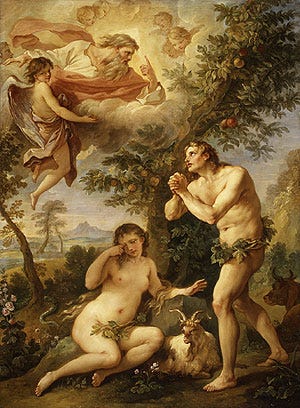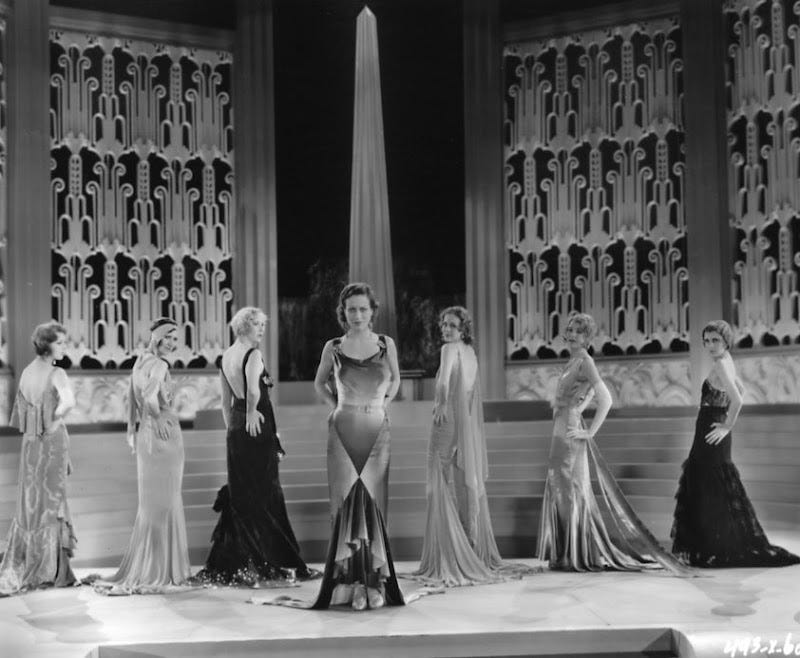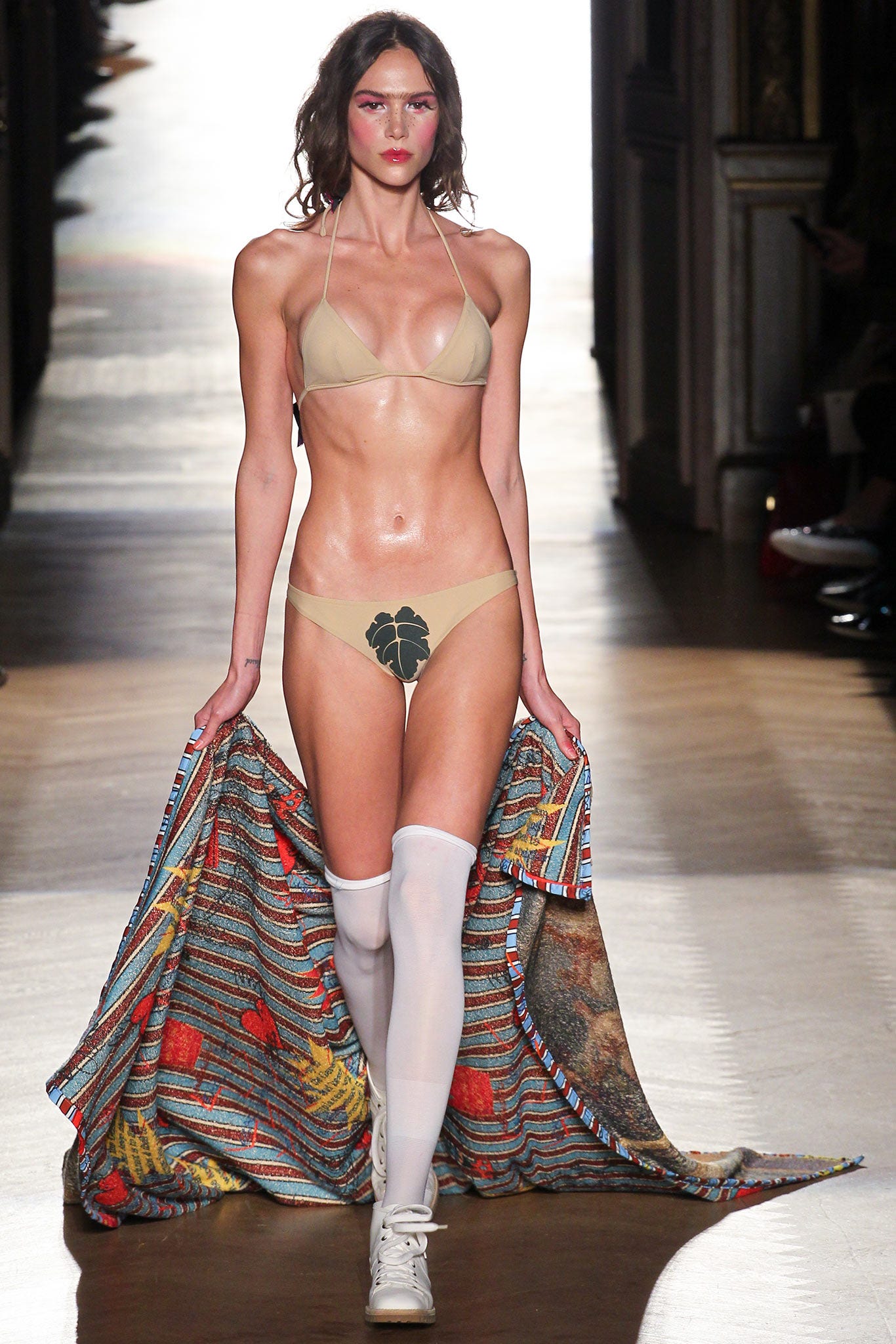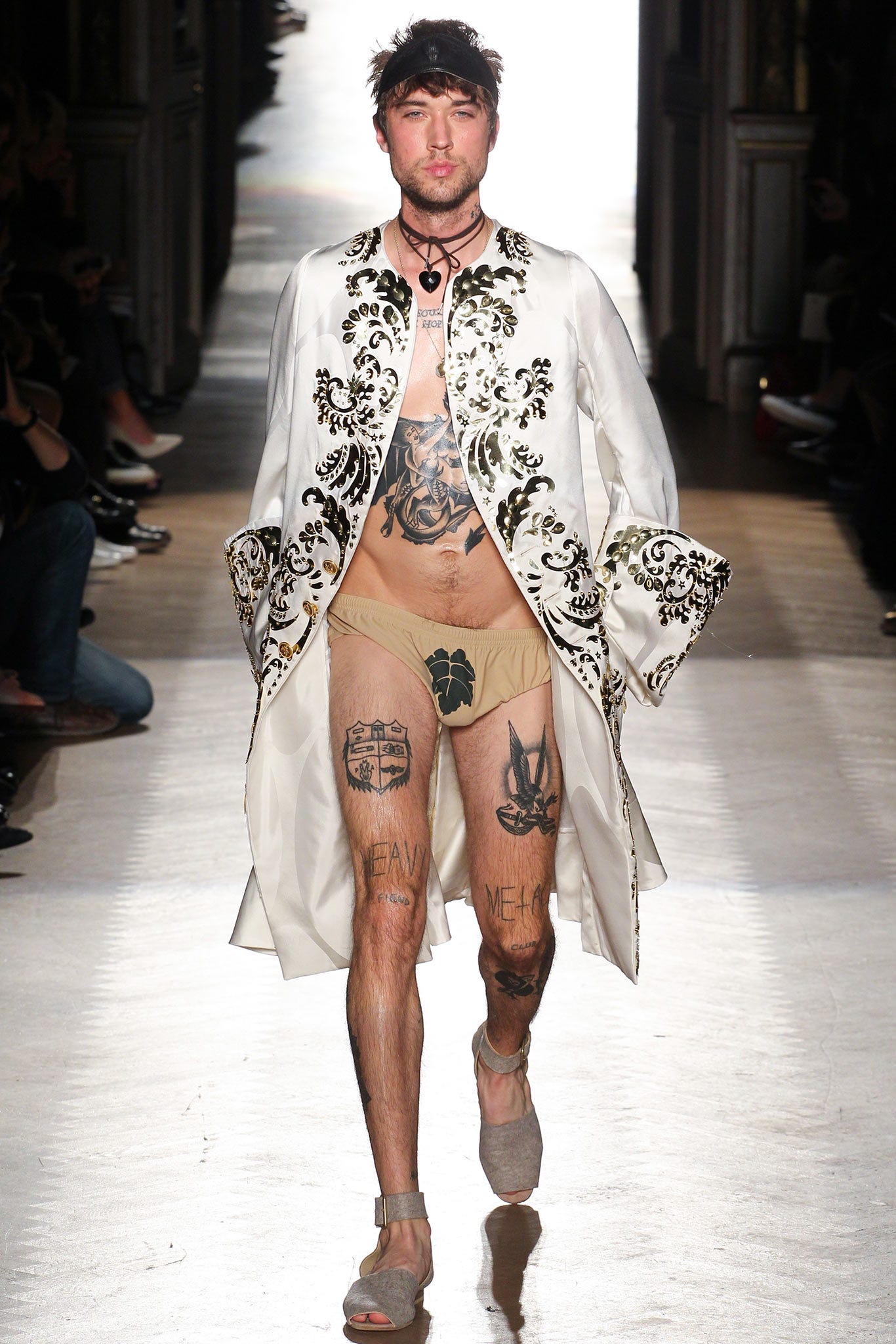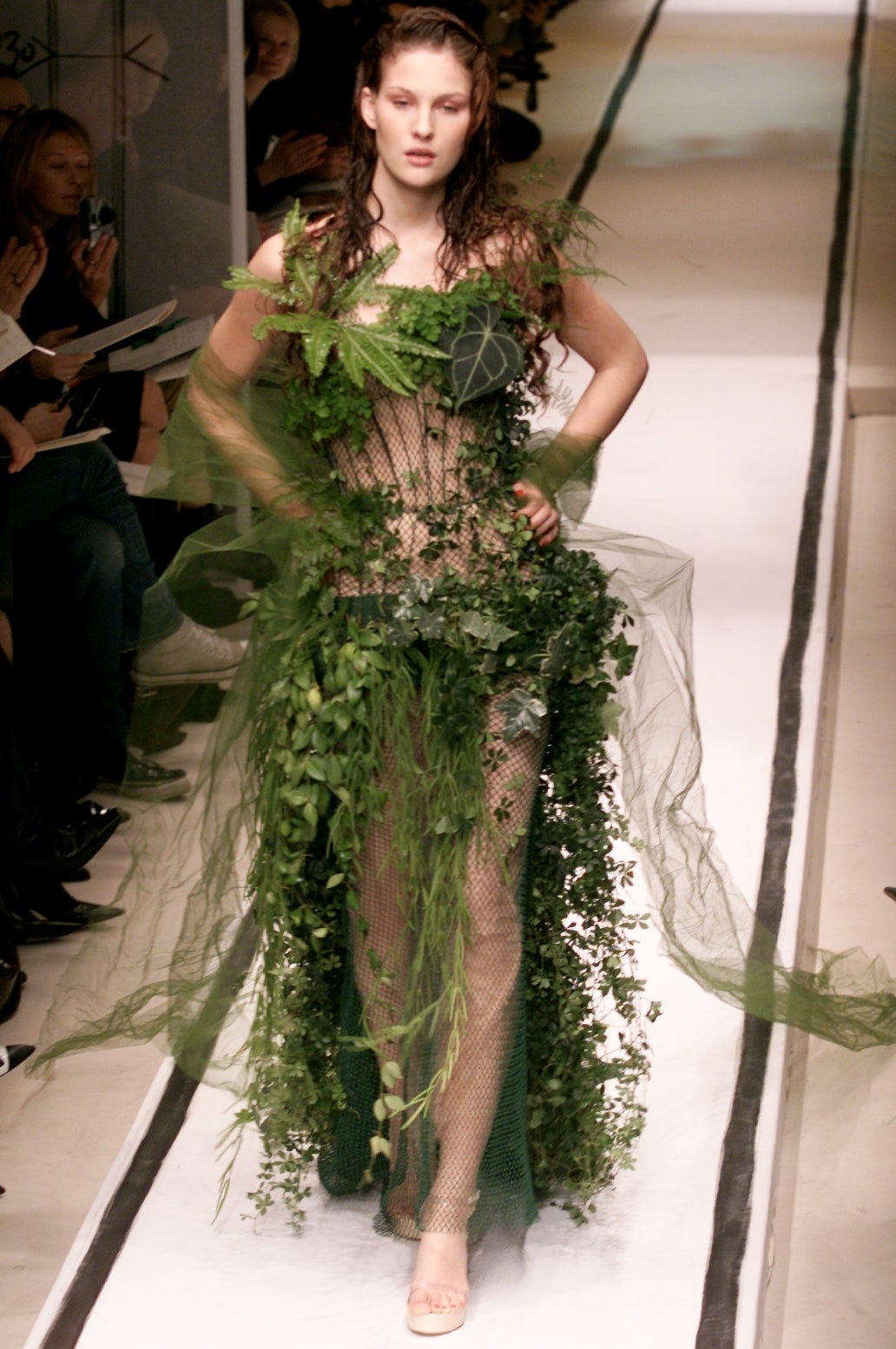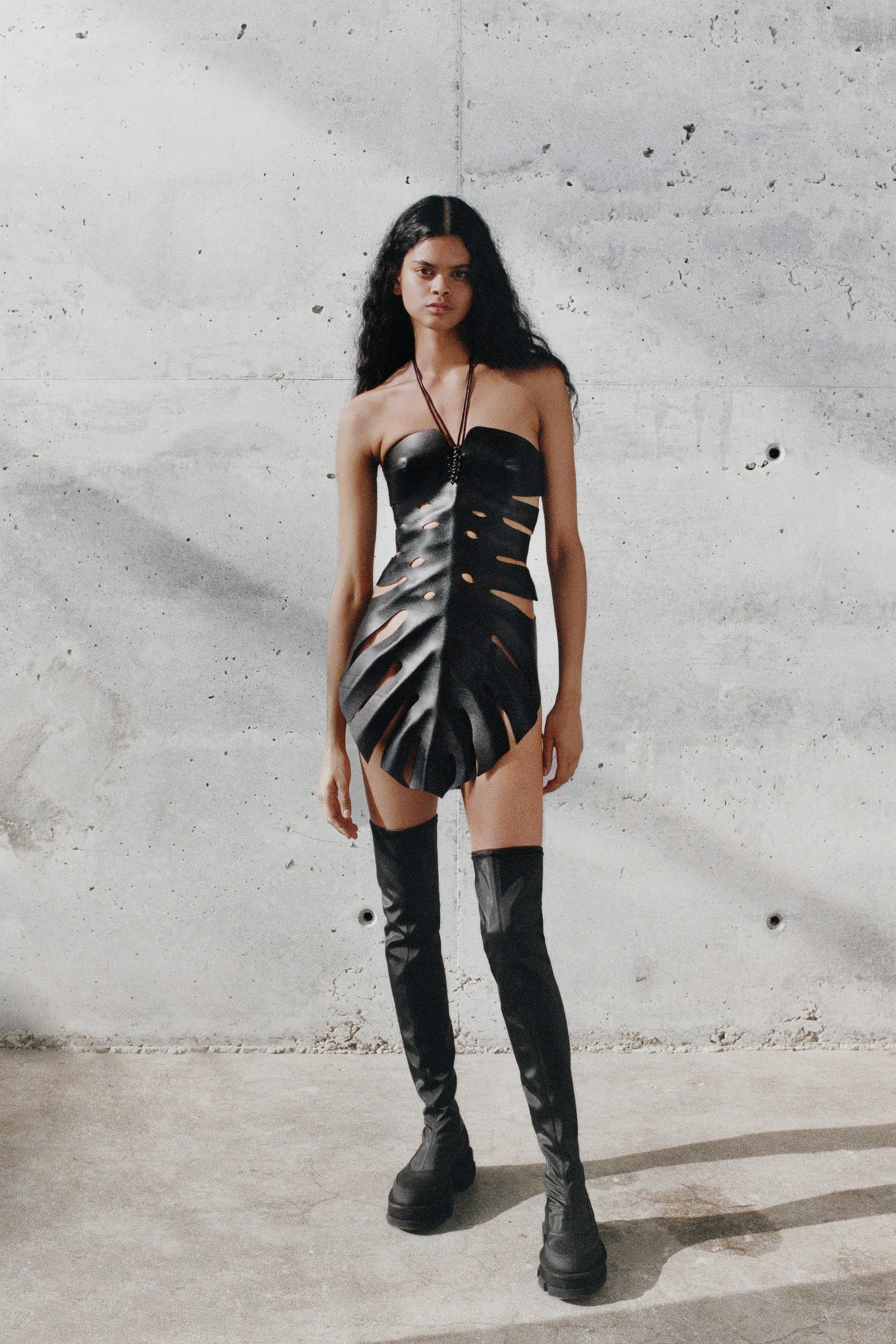Eve, of Adam and Eve fame, is known for a few things; she is the creator of original sin, the cause of the fall of man, eater of the forbidden fruit, and the original couturier(?).
The birth of this newsletter originated when I read a quote by columnist Elsa Maxwell, from a 1934 issue of American Vogue:
“Eve… became the first couturier, when she evidenced such striking concern as to the proper angle in the draping of her fig leaf.”
Now, if you recall, one of my first fashion newsletters was an explanation on what couture actually was. There I discussed Charles Worth, and how he is known as the ‘father of haute couture’. But perhaps I was mistaken. Perhaps my girl Eve actually started it all.
After Adam and Eve ate the forbidden fruit, they became aware that they were naked. Panicked and ashamed, the two quickly sewed fig leaves together, and made themselves aprons.
The fig leaf became central to ideas about clothing, modesty, and morality. Being naked was seen as shameful, but in the 1400s Italian artists rediscovered classical Roman and Greek art, where being naked represented honor and virtue. Statues in classical antiquity were often nude, modeled after naked athletes to display beauty and good citizenship. Shoutout Michelangelo.
However, with the rise of Christianity, there was less tolerance for the naked human form, and in 1563 the Roman Catholic Council of Trent ruled that ‘all lasciviousness be avoided’ in religious images. The fig leaf once again became a symbol of censorship and had huge repercussions for the history of art. The ‘Fig Leaf Campaign’ saw painted or cast leaves used as a weapon in the war against indecency. Many statues were castrated and many paintings were painted over, time and time again.
In 1822 the first nude statue to be displayed in the UK since the Roman era was put up in Hyde Park as part of the Wellington Monument. The 18ft statue of Achilles was created from melted down French cannon and a fig leaf was placed carefully on it, which actually became the subject of much satire at the time.
So while the term ‘fig leaf’ might have not been left with the most positive connotation, the fruits of Eve’s labor have continued to live on in fashion.
The 1926 Howard Hawks film, Fig Leaves, follows the lives of a married couple; Husband Adam, and his fashion obsessed wife who just so happens to be named Eve. Although she knows her husband would disapprove, Eve lives out her fashion fantasies by modeling during the day. Her neighbor, who totally wants her husband and who represents the serpent in this modern day Garden of Eden, is the one that convinces her to do so. Using the idea of Eve as the original couturier, the costume designer created fifty outfits for a Technicolor fashion show sequence.
In her FW1989 collection, Vivienne Westwood used the fig leaf as a motif in her designs to signify environmental issues and moral hypocrisy. The fig leaf had a reprise in her SS2015 collection, and the designer also sported her fig leaf tights on Instagram in 2020. A bodysuit from the original collection can be yours for only $12,400.69!
Although not a direct reference, Jean Paul Gaultier has used greenery multiple times in his collections, one of which being the finale, bridal look in his SS2002 Couture collection. This idea of a bride being covered in leaves feels very Eve to me, I don’t know.
In his Fall 2021 collection, Dion Lee used leaves (apparently modeled after the Monstera, but I’m running with it) to create beautiful, molded, leather tops and dresses.
You might remember that the 2018 Met Gala theme was Heavenly Bodies: Fashion and the Catholic Imagination, and upon writing this I realized I couldn’t recall a fig leaf look. I felt like that was something I would have definitely remembered, but decided to scroll through each look anyway. Alas, I was left disappointed. The closest I got to a fig leaf was Adwoa Aboah in a Marc Jacobs dress that seemed to be covered in shrubs; not enough!!! Honestly, what a missed opportunity. My Catholic guilt deserved an Eve, fig leaf moment.
It’s interesting to see how we view the naked human body as worthy of being on display, to being seen as taboo, back to being seen as beautiful, and so on, and so forth. Throughout the years, we’ve seen designers like Jean Paul Gaultier, Thierry Mugler, Moschino, Syndical Chamber, etc. play with the idea of the naked body, creating the most stunning trompe l’oeil moments. The Greeks and the Romans had the right idea (this is future newsletter foreshadowing), and so do these designers. Throwing in a little fig leaf every once in a while would just be camp at this point.
I’ll be honest, I expected more influence from the Garden of Eden and it’s little fig leaves, so I appoint Jeremy Scott at Moschino to create the most camp Adam and Eve inspired collection for the next Spring/Summer season. Thnx!
TTYL!!!
xx




